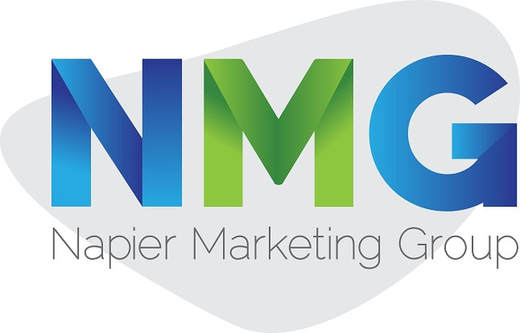Learn These SEO Foundations for B2B Marketing
In the B2B industry, SEO can be one of the most lucrative marketing campaigns you run. Your online visibility skyrockets. Trust is immediately built with potential leads. Customer acquisition is at an all-time high because of your organic reach and increased conversion rates.
That begs the question, where do you start when formulating a B2B SEO strategy? This article will cover the foundational components of B2B SEO marketing. In addition, we'll discuss what B2B SEO is and the differences between B2C and B2B SEO.
What is B2B SEO?
B2B SEO is optimizing a website to rank higher in search engine results pages (SERPs) for keywords related to the products or services the business offers. The goal of B2B SEO is to generate leads and increase sales from organic traffic. In addition, SEO for B2B businesses is slightly different than B2C marketing.
To better understand how B2B SEO works, let's look at the differences between B2C and B2B SEO.
What are the differences between B2C and B2B SEO?
The main difference between B2C and B2B SEO is the searcher's intent. When someone uses a search engine to find a product or service, they are usually looking to purchase that product or service immediately. This is known as a "transactional" search.
In contrast, when someone uses a search engine to research a product or service they are looking to buy, this is known as an "informational" search. So, for example, if someone is looking for reviews on a product before buying it, this would be an informational search.
People researching a product or service aren't typically ready to purchase it immediately. Instead, they are in the early stages of the buyer's journey and are still trying to gather information about their options.
The fundamental goal of B2B SEO is to attract leads in the early stages of the buyer's journey with blog posts, how-to guides, ebooks, and other forms of content. Once you've attracted leads with your SEO strategy, it's up to your sales team to close the deal.
What are the foundational components of B2B SEO?
Now that we've gone over what B2B SEO is and the differences between B2C and B2B SEO, let's look at the three foundational components of a successful B2B SEO strategy.
Buyer Personas
According to Digital Authority Partners, creating buyer personas is essential to your B2B campaigns. Working on your user experience from the get-go will pay enormous dividends in the long run. If you can make each person reading your website feel like someone is speaking directly to them, your marketing will become infinitely more effective.
Personalizing your marketing through buyer personas or avatars is how you build loyalty and trust with your audience. When creating these personas, it's vital to be as specific as possible. You want to put yourself in their shoes. What are their issues, feelings, and struggles? What would they feel like if their problems were solved and their dreams came true? The key is to make your buyer personas as authentic as possible.
Understand your entire funnel
Before you begin keyword research, you must see where each piece of content fits into the overall marketing funnel. Once you understand your buyer personas and what they're looking for at each stage in the funnel, it becomes much easier to target the right keywords.
The typical marketing funnel has four stages:
Awareness: The potential customer becomes aware of a problem or need.
Interest:
The potential customer is interested in learning more about their problem or need and how it can be solved.
Consideration:
The potential customer considers their options for solving their problem or need.
Decision:
The potential customer decides on a solution to their problem or need.
Remember that not all content will be relevant to every stage of the buyer's journey.
For example, a blog post about the top five benefits of your product would be most relevant to someone in the consideration stage. In contrast, a blog post about the different types of products would be most relevant to someone in the awareness stage.
Keyword research
The goal of keyword research is to find the words and phrases that potential customers use to search for information about your product or service. We highly recommend tailoring your keyword research to your buyer personas to make your content marketing as effective as possible.
There are a few different ways to go about keyword research. The most common method is to use a keyword research tool like Google AdWords Keyword Planner or Moz Keyword Explorer. These tools will estimate how many people are searching for a particular keyword every month.
Another way to do keyword research is to conduct competitor analysis. That involves looking at the keywords your competitors are ranking for and trying to identify any gaps in their content.
You can also use Google Search Console to see which keywords your website already ranks for. Identifying these keywords can help you develop new blog post ideas or ways to optimize your website.
Once you've identified a few potential keywords, it's time to start creating content.
Obtain quality backlinks
To get high-quality backlinks, you must create high-quality content that is "link-worthy." As a result, you'll get many backlinks from high-authority sites referencing your content.
Another way to go about link building is to reach out to other websites and ask them to link to your content. That is a more direct way of link building, but it can be effective if done correctly.
The most important thing is to focus on quality over quantity regarding backlinks. It's better to have a few high-quality backlinks than a bunch of links from sites with little authority.
Optimize landing pages and call-to-actions
The final fundamental step of B2B SEO marketing is all about optimization.
First, you need to ensure that your titles and meta descriptions are keyword-rich and accurately reflect the topic of your article.
Second, your landing pages and call-to-actions (CTAs) must be optimized to convert visitors into leads. Your CTA needs to be prominently displayed and easy to find, and your landing page should be free of distractions.
Finally, you need to track your results to improve your SEO strategy continuously. Google Analytics is an excellent tool for tracking data like website traffic, time on site, and bounce rate.
Takeaways
By following these SEO fundamentals, you'll be well on your way to driving more traffic to your website and generating more leads for your business. But remember, SEO is an ongoing process, so don't forget to keep track of your results and make adjustments as needed.
That begs the question, where do you start when formulating a B2B SEO strategy? This article will cover the foundational components of B2B SEO marketing. In addition, we'll discuss what B2B SEO is and the differences between B2C and B2B SEO.
What is B2B SEO?
B2B SEO is optimizing a website to rank higher in search engine results pages (SERPs) for keywords related to the products or services the business offers. The goal of B2B SEO is to generate leads and increase sales from organic traffic. In addition, SEO for B2B businesses is slightly different than B2C marketing.
To better understand how B2B SEO works, let's look at the differences between B2C and B2B SEO.
What are the differences between B2C and B2B SEO?
The main difference between B2C and B2B SEO is the searcher's intent. When someone uses a search engine to find a product or service, they are usually looking to purchase that product or service immediately. This is known as a "transactional" search.
In contrast, when someone uses a search engine to research a product or service they are looking to buy, this is known as an "informational" search. So, for example, if someone is looking for reviews on a product before buying it, this would be an informational search.
People researching a product or service aren't typically ready to purchase it immediately. Instead, they are in the early stages of the buyer's journey and are still trying to gather information about their options.
The fundamental goal of B2B SEO is to attract leads in the early stages of the buyer's journey with blog posts, how-to guides, ebooks, and other forms of content. Once you've attracted leads with your SEO strategy, it's up to your sales team to close the deal.
What are the foundational components of B2B SEO?
Now that we've gone over what B2B SEO is and the differences between B2C and B2B SEO, let's look at the three foundational components of a successful B2B SEO strategy.
Buyer Personas
According to Digital Authority Partners, creating buyer personas is essential to your B2B campaigns. Working on your user experience from the get-go will pay enormous dividends in the long run. If you can make each person reading your website feel like someone is speaking directly to them, your marketing will become infinitely more effective.
Personalizing your marketing through buyer personas or avatars is how you build loyalty and trust with your audience. When creating these personas, it's vital to be as specific as possible. You want to put yourself in their shoes. What are their issues, feelings, and struggles? What would they feel like if their problems were solved and their dreams came true? The key is to make your buyer personas as authentic as possible.
Understand your entire funnel
Before you begin keyword research, you must see where each piece of content fits into the overall marketing funnel. Once you understand your buyer personas and what they're looking for at each stage in the funnel, it becomes much easier to target the right keywords.
The typical marketing funnel has four stages:
Awareness: The potential customer becomes aware of a problem or need.
Interest:
The potential customer is interested in learning more about their problem or need and how it can be solved.
Consideration:
The potential customer considers their options for solving their problem or need.
Decision:
The potential customer decides on a solution to their problem or need.
Remember that not all content will be relevant to every stage of the buyer's journey.
For example, a blog post about the top five benefits of your product would be most relevant to someone in the consideration stage. In contrast, a blog post about the different types of products would be most relevant to someone in the awareness stage.
Keyword research
The goal of keyword research is to find the words and phrases that potential customers use to search for information about your product or service. We highly recommend tailoring your keyword research to your buyer personas to make your content marketing as effective as possible.
There are a few different ways to go about keyword research. The most common method is to use a keyword research tool like Google AdWords Keyword Planner or Moz Keyword Explorer. These tools will estimate how many people are searching for a particular keyword every month.
Another way to do keyword research is to conduct competitor analysis. That involves looking at the keywords your competitors are ranking for and trying to identify any gaps in their content.
You can also use Google Search Console to see which keywords your website already ranks for. Identifying these keywords can help you develop new blog post ideas or ways to optimize your website.
Once you've identified a few potential keywords, it's time to start creating content.
Obtain quality backlinks
To get high-quality backlinks, you must create high-quality content that is "link-worthy." As a result, you'll get many backlinks from high-authority sites referencing your content.
Another way to go about link building is to reach out to other websites and ask them to link to your content. That is a more direct way of link building, but it can be effective if done correctly.
The most important thing is to focus on quality over quantity regarding backlinks. It's better to have a few high-quality backlinks than a bunch of links from sites with little authority.
Optimize landing pages and call-to-actions
The final fundamental step of B2B SEO marketing is all about optimization.
First, you need to ensure that your titles and meta descriptions are keyword-rich and accurately reflect the topic of your article.
Second, your landing pages and call-to-actions (CTAs) must be optimized to convert visitors into leads. Your CTA needs to be prominently displayed and easy to find, and your landing page should be free of distractions.
Finally, you need to track your results to improve your SEO strategy continuously. Google Analytics is an excellent tool for tracking data like website traffic, time on site, and bounce rate.
Takeaways
By following these SEO fundamentals, you'll be well on your way to driving more traffic to your website and generating more leads for your business. But remember, SEO is an ongoing process, so don't forget to keep track of your results and make adjustments as needed.



